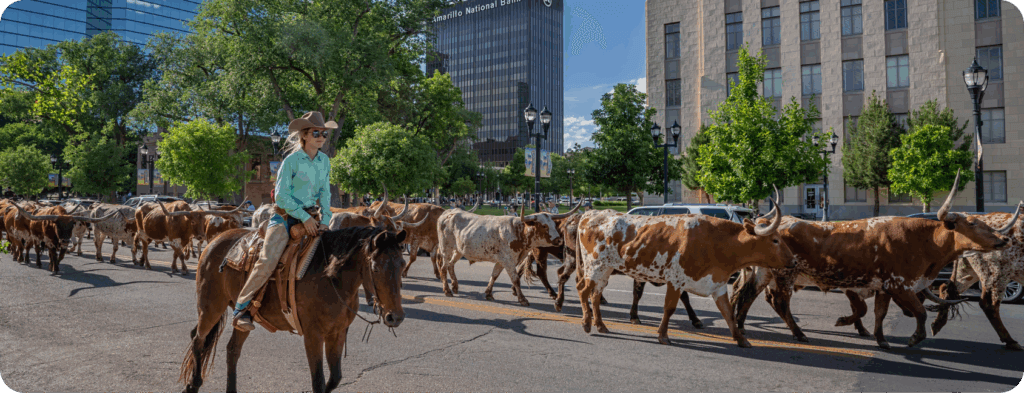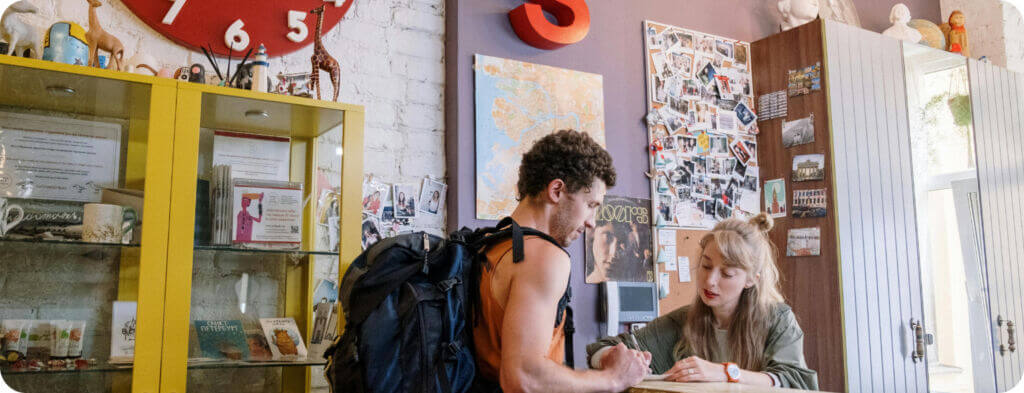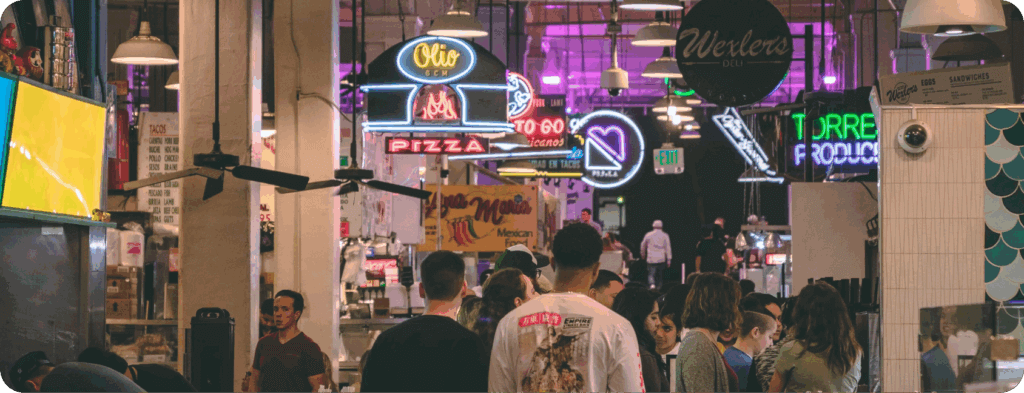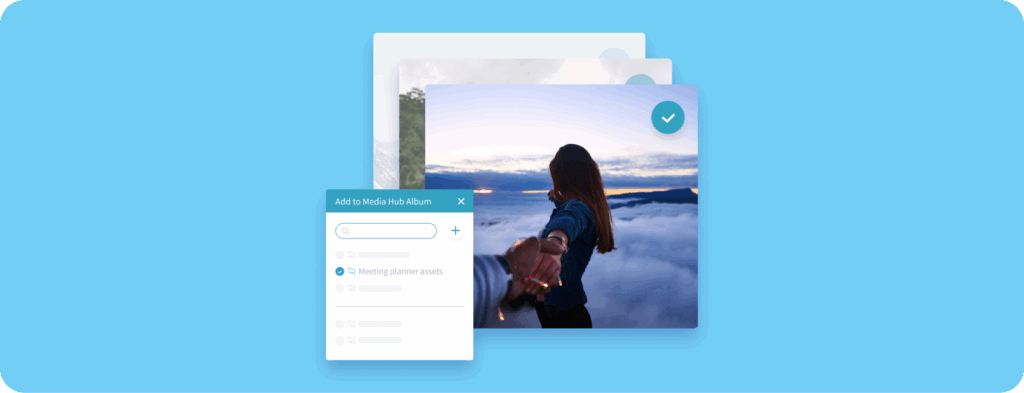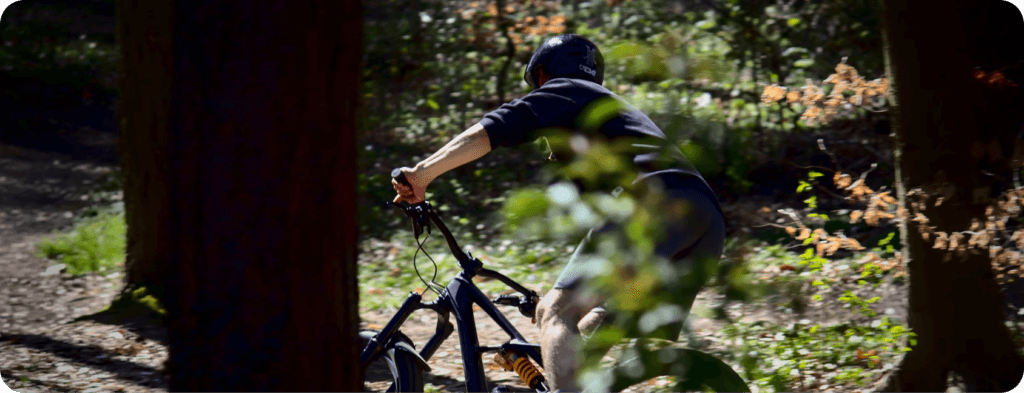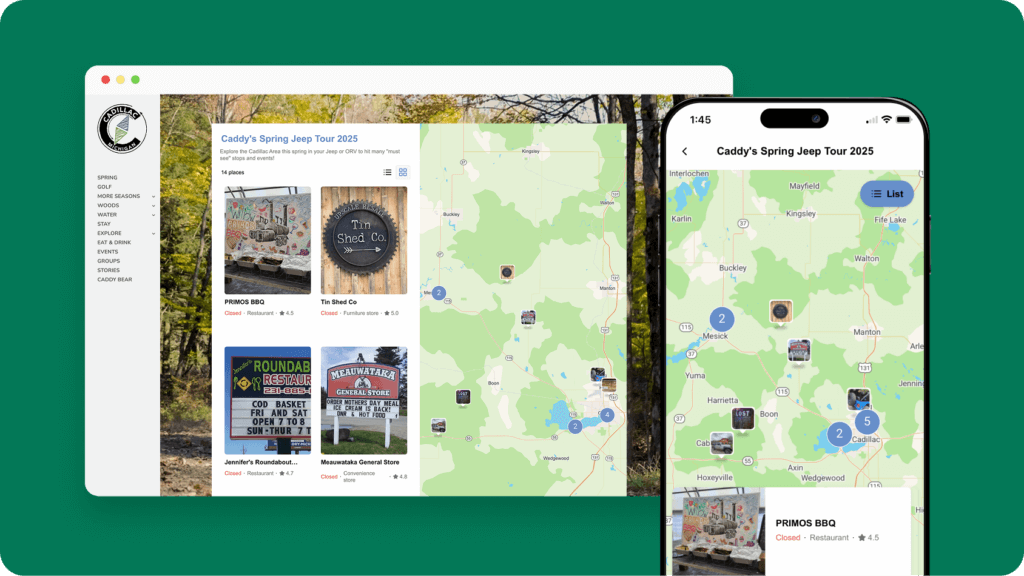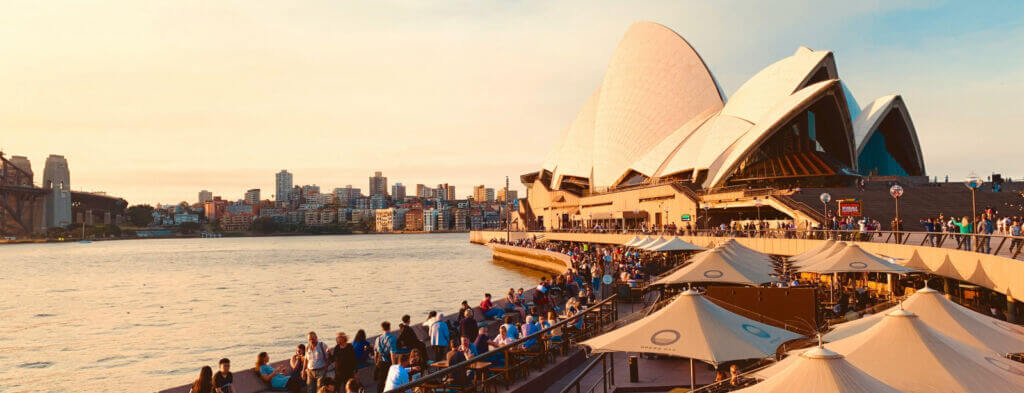
Every Australian who has traveled internationally has, at one time or another, been hit with the same line… throw another shrimp on the barbie! 🦐
But… Australians call them prawns, not shrimps. So, where did this phrase—one that’s become synonymous with describing Aussie culture—even come from? 🤔
After some Google searching, we were stunned to find the phrase was from a $15 million destination branding campaign by Tourism Australia in the 1980s. Interestingly, the ‘Come and say G’day’ campaign was made exclusively for the North American market and the advertisements only ever ran there.
Paul Hogan says “I’ll slip an extra shrimp on the barbie for you” in the iconic destination branding campaign. Image source.
Yet… it worked.
After the destination campaign launched in the US, Australia shot from #78 on the most-desired holiday list for Americans to #7. Arrivals to Australia from America doubled over the first three years and the growth rate over four years was more than 25%.
It was a masterclass in destination branding. The campaign captured Australia’s brand personality, it has a specific target audience and most importantly—it increased tourism numbers.
In this guide, we’re going to dig a little deeper into the power of destination branding, how to build a brand identity campaign, and a few examples that hit it outta the park.
Let’s get started 👇
What’s ahead
What Is Destination Branding?
Destination branding is a unique way to position a city or country to help it stand out and drive more tourism. Instead of a focus on consumerism or attractions, destination branding aims to shape the perception of a destination using culture, brand values, heritage, landscapes, and experiences to help resonate with a traveler.
It’s driven by a modern-day desire to experience something different. In fact, a GetYourGuide study found 95% of American travelers prefer to spend at least part of their trip on new and unique experiences. By branding a destination as different and unmissable—marketers can help travelers meet that goal.
Destination Branding Vs. Marketing: What’s The Difference?
Destination branding is sometimes confused with everyday travel marketing campaigns—and it’s easy to see why. Both strategies aim to drive more tourists and increase awareness of a destination, but there are granular differences between the two.
Destination branding plays a long game.
Brand development focuses on the personality of a destination and will lean on cultural heritage and unique identity to shape a campaign. This involves crafting a narrative that authentically represents the destination’s uniqueness and allure. It focuses on three main attributes:
😎 Identity. A strong focus on history, traditions, natural beauty and unique culture is the foundation of any destination branding campaign.
🤝 Connection. It hits potential visitors right in the feels. Destination branding can help a future visitor connect with a country’s culture, food, unique beauty and history through storytelling.
🥅 Long-Term Goals. It shapes the perception of the tourism destination into a consistent image that distinguishes it from other places.
On the other hand, destination marketing casts a wide net using campaigns, advertisements, and promotional activities. It wants to attract visitors through:
📺 Promotions. A destination’s attractions and activities along with other perks like accommodation and transport are marketed to potential travelers.
🎯 Targeted Campaigns. It focuses on identifying specific market segments and tailoring campaigns to their travel goals.
✈️ Bookings. Destination marketing is all about getting people on the plane (or train… or bus). The main goal is to convert the target audience into paying tourists.
While marketing can win people over for a weekend break or Summer holiday, destination branding goes a little deeper. It aims to connect deeply with a potential visitor and plant a seed so they yearn to visit and one day experience the place themselves.
Why Is Destination Branding So Important?
Destination branding is a critical aspect of marketing for any DMO (destination marketing organization). It plays a crucial role in shaping the perception of a destination and influencing travelers’ decisions.
And countries can spend big bucks to brand a destination.
A decade ago, the United States dropped $150 million on the “Discover America” campaign. It placed television commercials in nine nations, purchased ads on the Tokyo subway, and even had Facebook pages in Portuguese and German. It resulted in an additional 1.1 million tourists visiting the following year, representing a 2.3% increase YoY and an additional $3.4 billion in international visitor spending.
A branding asset from America’s 2012 campaign. Image source: Forbes.
The strategy is even more impressive when applied to destinations that were once, as described by the New York Times, “dangerous and conflict-ridden”.
Just look at the rebranding of Croatia case study.
Stats show in 2018, nearly 560,000 Americans visited the country. But in 1998, a mere 41,000 Americans made the trek. And it wasn’t just more people from the US visiting—nearly 20 million tourists visited Croatia in 2018, up from 1.5 million in 1995.
So, what happened? 🤔
The country did a lot of work to shed the reputation of the ethnic conflicts of the 1990s and any lingering memories of postwar socialist Yugoslavia. Croatia focused its brand messaging on its natural beauty, traditional cuisine and Mediterranean lifestyle to rebrand itself as a hidden gem of European tourism.
Since then, millions more tourists have flocked to the country every year, and HBO even filmed “Game of Thrones” in Dubrovnik in southern Croatia.
“Nowadays, Croatia is one of the top destinations in the Mediterranean,” Kristjan Stanicic, director of the Croatian National Tourist Board, explained to the New York Times.
“Our competitors are Spain, Italy, France, Greece and that hasn’t always been the story. People know now that we have great beaches and other things to do.”
Here’s a closer look at why place branding is so important and can turn a country into a must-visit destination 👇
- A better way to carve a unique identity. Effective destination branding can build a unique picture of how a traveler perceives a place. A focus on specific culture, community or heritage can set a destination apart and tourists will know it’s the only place they can have specific experiences. It’s also a way for a destination to shape a narrative and hit back at any misconceptions or outdated stereotypes visitors may have about a region.
- More competitive against other destinations. The tourism market is crowded, and as emerging countries start to take a piece of the pie, effective destination branding can give a location a competitive edge. For example, data shows millions of Americans choose Europe as their favorite holiday destination, so European countries must compete for these tourist dollars. Croatia is a great example of how to stand out from the crowd by leaning on unique features like natural beauty and tradition to win tourists over.
Most importantly, a strong destination brand can have a direct impact on the local economy.
More tourism can lead to more jobs, potential investment and growth of tourism-related businesses, and general prosperity for locals.
Take the example of Australia’s “Come and say G’day’ campaign we talked about at the start of this article. After it was launched in January 1984, it depicted Australia beyond the stereotypes of having dangerous wildlife or just snorkeling on the Great Barrier Reef. Americans were greeted with a sense of humor and warmth, and the campaign made it clear Australia wanted them to visit.
The economic impact was immediate.
The Sydney Morning Herald reports there were 70,000 inquiries from Americans about vacationing in Australia after the campaign launched. Holiday visa applications shot up by 54%. And 285,000 calls were made to the campaign’s hotline 📞
How To Establish A Brand Identity
Any city or region can talk about a zoo or a great restaurant. But what is it about the place that will make tourists really want to visit?
Building a destination brand is all about introspection. If you focus on what makes a destination (really) unique, it’s much easier to draw more visitors in. Here’s what to think about when you create a destination branding strategy 👇
1. Celebrate Your Destination’s Unique Cultural Identity
Embracing the unique cultural identity of your destination is essential for creating a strong brand. Leaning on local history and traditions along with cuisine, art and even folklore can help paint it as a one-of-a-kind destination for visitors.
This strategy is an ideal way to position a destination—even when competition is fierce.
Tucked in the Nordics, Denmark must compete with popular destinations like Norway, Sweden, and Finland for attention. The team at VisitDenmark uses a mix of user-generated content (UGC), stunning visuals, and a hint of mystery to paint Denmark as the Land of Everyday Wonder.
It also leans heavily into something only Denmark can offer—Norse Viking mythology and the Danish monarchy.
This is a simple example of how destination branding can go beyond beautiful scenery and cuisine to tap into truly unique experiences for visitors.
2. Show and Tell Through Captivating Stories
Most successful destination branding campaigns have one thing in common: a good story.
A captivating narrative about a country’s history, culture, values or even humor can be enough to grab an audience’s attention. By telling a compelling story, it’s easier to craft a narrative about why a destination is a good choice and more importantly, why it should be the top choice.
Destination Canada recently took a different approach to storytelling.
It teamed up with TED to talk about topics that aren’t usually a focus for DMOs. The 14-episode series covered everything from Canada’s extreme climate to the Indigenous communities and even traditional throat singing.
This approach was a true think-outside-the-box approach to destination marketing. Rather than focusing on why people should visit Banff National Park, the series started a conversation around truly unique parts of the country like its culture, sustainability, and climate.
3. Think Like a Local
Local businesses and residents can be an untapped resource for building a destination identity.
These are the people who live, breathe and love the area you want to promote. (To work with them on unique short-form video, get in touch with our team!) Put yourself in their shoes and ask: just what is it that makes this place so unique? 🤔
This is exactly what Calgary did with its Basecamp to Adventure campaign in 2017.
The area has stiff competition from major Canadian cities like Montreal, Toronto, and Vancouver, but it was desperate to attract younger travelers to the region. So, the campaign targeted some of the most popular attractions like Lake Louise, Calgary ‘Hoods, and Sled Island, and turned them into fuel to brand the entire region.
Most importantly, the campaign focused on photographs and experiences from real people who had visited the areas in Calgary.
The branding process was successful, especially for native Canadians living in Vancouver and Toronto. The number of 18-24-year-olds visiting the Tourism Calgary website jumped by a whopping 322%.
Destination Branding Examples That Hit The Mark
When it comes to successful destination branding, numerous campaigns have managed to put a place on the map. Let’s take a look at a couple that stand out 👇
Think Outside The Box: The Sheep Campaign That Went Viral
Faroese sheep mounted with Google cameras. (Courtesy of Visit Faroe Islands)
Faroe Islands is often overlooked by tourism juggernauts around it like Scotland and Iceland.
The tiny Danish archipelago has a population of just over 50,000 and it’s so remote that until 2016, it wasn’t even featured on Google Street View.
So, the country’s tourism board, Visit Faroe Islands, petitioned to get Google to map its roads and created the Sheep View 360° campaign. The grassroots campaign began when local residents strapped 360-degree cameras to sheep on the island to capture video, images and GPS coordinates to get the job started.
The campaign went viral and along with a 30% increase in visitors after it launched, Google also took notice.
The best part about the destination rebrand is, despite having no media budget, it generated an estimated $50 million in PR revenue and a staggering 2 billion media impressions 🤯Needless to say it made the tourism board’s stakeholders very happy.
Townsville: Queensland—But Make It Not The Great Barrier Reef
When people think about Australian travel, most will immediately think of destinations like Sydney, Melbourne, and the Great Barrier Reef.
Townsville, a city in North Queensland and a growing coastal destination in the Northeastern part of Australia, is on a mission to change that. Through its local DMO, Townsville Enterprise, and a team of three marketers, Townsville is repositioning itself by focusing on its five main regions: Magnetic Island, Burdekin, Charters Towers, Hinchinbrook, and Palm Island.
“A major challenge of our destination is actually awareness from across our domestic and international markets…Destination awareness is quite low for our region, and we know that off the back of our research, so being able to leverage shared stories of people who have been to our region to use throughout our marketing strategy is really key.”
Simone Sullivan, Marketing Manager with Townsville Enterprise
To stand out from nearby tourism hotspots like Whitehaven Beach and the Great Barrier Reef, Townsville Enterprise focused on marketing its natural beauty, history, and culture. It’s going beyond the wide appeal of every tourist and targeting couples seeking romance, families who want a place to unwind, and even those studying marine science and curious to explore.
With such a small marketing team, branding the destination has been a challenge. Townsville Enterprise decided to harness UGC using CrowdRiff in their various marketing and social media channels to increase content output and make campaigns authentic. By doing so, the DMO can showcase the region’s natural beauty through the eyes of real visitors.
The results have been eye-popping.
Townsville North Queensland has seen a 70% increase in consumers taking action to book a holiday, and there has also been a 116% boost in destination awareness.
“Being authentic and organic is another key component to how we are building the brand of Townsville North Queensland. We want to be real and organic and raw and that’s where social media content and sharing the experiences that visitors have had in real terms comes in.”
Simone Sullivan
Drive More Visitors Through An Authentic Voice
Visitors want to experience something unique. Something different. Something they can’t get anywhere else.
In the flood of social media posts, viral videos, and constant marketing, destination branding gives DMOs a chance to stand out. But a successful strategy requires numerous initiatives and introspection. Think about what makes your destination truly unique and how you can connect deeply with your audience.
Using emotion, personality and identity, destination marketing can help potential visitors in the decision-making process and carve out a place as an authentic experience that someone yearns to have.
And if it comes down to it, don’t be afraid to think outside the box…. Even if it means strapping a camera to a sheep. 🐑


